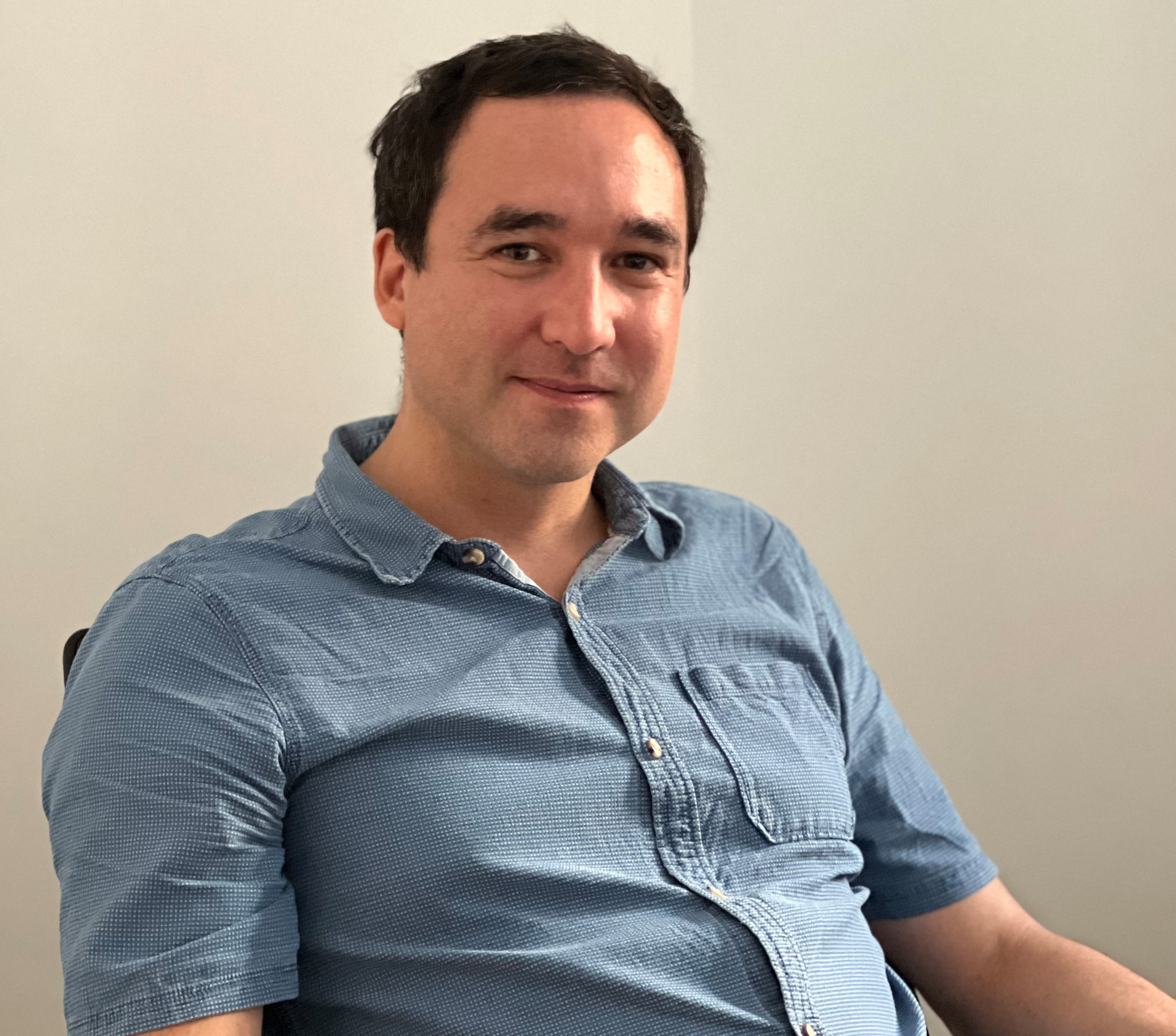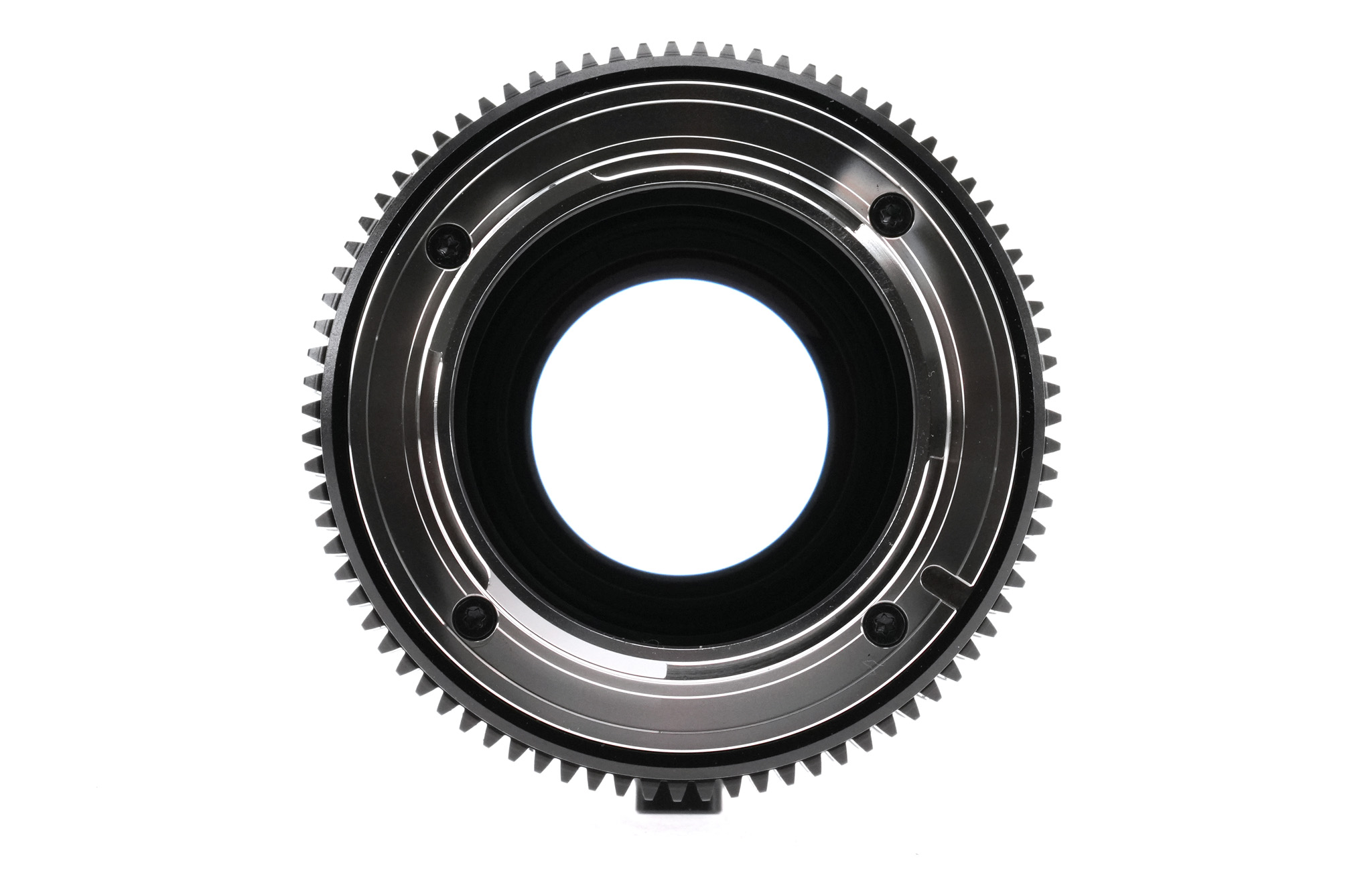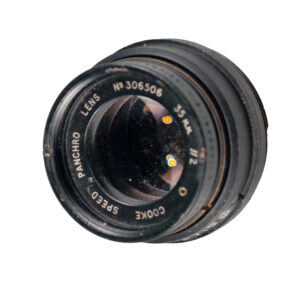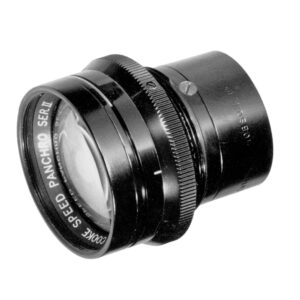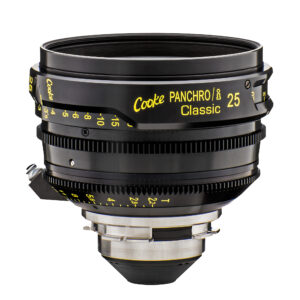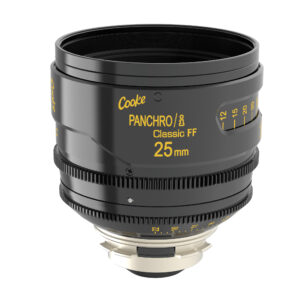Jon: Let’s get to the heart of the Cooke SP3 lenses. What does “based on Speed Panchros” mean?
Graham Cassely: When we started on the Panchro/i Classic project about 8 or more years ago, we did a lot of digging through lots of paperwork at Cooke to find the original Speed Panchro designs. We found the old prescriptions—the optical designs written down by hand. We couldn’t just use them straight away because a lot of the old glass types they were using back then are not available anymore. We had to tweak the designs to get them to work with modern glass. We gained a lot of experience replicating the original Speed Panchro look. And we did that again a few years later, scaling them up as the Panchro/i Classic Full Frame primes.
The SP3 series are essentially another variation of the Speed Panchro design. In terms of the look of the lens, we tried to keep it very similar to what a Speed Panchro or a Panchro/i Classic would look like. We’re using the same types of single layer coatings that they would have used back in the 50s or 60s—rather than the multi-layer coatings of modern lenses which are more efficient at reducing reflections. We also wanted some of that blue-purple flare that you get from those old coatings. And we did a lot of work just to make the designs as compact as possible, because we wanted the SP3s to be small.
For Specifications and details, see the FDTimes introduction to SP3.
For maybe the four people in the world who don’t know the Speed Panchro, could you please explain?
Cooke built Speed Panchro cine lenses from the 1920s through 1960s. A majority of the classic Hollywood films from that era used them. With the advent of digital cameras, a lot of people are going back to these old lenses because they “take the edge off” that digital look and give you a more forgiving image, which is why we brought back the Panchro/i Classics to give the same kind of feel.
Did Cooke change the Speed Panchro designs or parameters from the 1920s through the 60s? I guess they did not even have anti-reflection coatings in the 20s and 30s?
The original Series I Speed Panchros didn’t have coatings. The new Panchro/i Classics and SP3s are based more on Series-II Speed Panchros. When people think of Speed Panchros, they’re usually thinking of Series II and Series III.
SP3 were specifically designed for shorter flange focal depth (FFD) mirrorless cameras?
Yes. E-mount (18mm FFD), RF (20mm FFD), L (20mm) and M (27.8mm FFD). You cannot use them on PL mount (52mm FFD) cameras. For PL, you might as well use our Panchro/i Classic.
Why do SP3 primes have wider rear elements than original Speed Panchros?
Some Speed Panchros had very short distances between the back of the glass and the film plane. The 32mm and 40mm Speed Panchro have a tiny diameter glass at the back, which is how they clear a spinning mirror film camera. The SP3 has a bigger rear element at the back because we designed for digital sensors and tried to make the telecentricity a bit better. Telecentricity is about the angle of the light coming out of the back of the lens. If the rear element is too small, then you’re going to have a wider angle going out to the corners of your image. If you have a bigger rear element, you can make it a bit more gentle, which is preferable for digital sensors.
Please describe the particular look, the Cooke Look, of the Speed Panchro, the Panchro/i Classic, and now the SP3?
The lens designs allow for high-order aberrations. When you achieve the right balance, they provide a lower contrast look. The lenses resolve fine detail well but their lower contrast allows them to appear slightly softer, gentler. This is because we often perceive low contrast images as being less sharp than high contrast ones. The single layer coatings, being less efficient than more modern coating designs, also contribute to a lowering of the contrast of the image because you have more stray light.
What of our obsessive talk about fall-off towards the edges?
That is part of the look—how the image changes from the center to the edge and how you perceive it. When they were designing the original Speed Panchros, they didn’t have electronic computers. It was all done by hand. In optical design terms, the primary aberrations were pretty well corrected, but the high-order aberrations were less well corrected. That’s what gives you the low contrast look and the fall-off from the center to the edges of the image.
Cooke had rooms full of people who were called “computers”— mostly ladies, doing the math and working with logarithmic tables, tracing rays of light from one optical surface to the next through the lens. That’s where the high-order aberrations came in. They didn’t have the computing power to correct them all. But, it turned out that the images looked beautiful.
When I first started at Cooke, there was a lady named Pat Kelly working in optical design. She was one of the “computers” at Taylor Hobson, doing the math by hand. After Cooke bought their first electronic computer, she switched to that. It was the size of a room. These calculations are things that I can now see in my desktop software at the click of a button.
Please talk about the SP3 mechanical design.
We’ve done a few things to get the lens into such a small package. If you look at a Panchro/i Classic, the iris will go down to T22. SP3 goes down to T16. Also, in the Panchro/i Classic the iris is linear, so you have an equal distance between the marks for each stop. As you stop down an SP3, the distance between each stop gets closer together, which allows you to reduce the diameter of the whole lens. As for focus, to reduce the size of the SP3, the angle of rotation is 160 degrees compared to 270 degrees on the Panchro/i Classic. Also, the SP3s don’t have /i or any electronics, so that’s another weight and space saver.
How did you become one of the optical designers of SP3?
I’m from Leicester. Believe it or not, I’d never heard of Cooke while growing up. My degree is in mechanical engineering. After I finished university, I got a job at Cooke as a process engineer doing work on coatings and aspheric production. Then, Mark Gerchman, one of the optical designers at the time, needed someone to do some number crunching and I got more and more into the optics side of things. Around 2010, I got a Master’s degree (MSc) in Optics at Imperial College, London. Cooke paid for it, which was amazing. I’ve been an optical designer here ever since.
We’re really happy with the SP3. The size was a big driver for what we were trying to achieve. The look of the SP3 is what we were aiming for. It’s very Speed Panchro. It’s all about the Cooke magic.
Cooke Speed Panchro History
- Speed Panchro Series I
- Speed Panchro Series II
- Panchro/i Classic
- Panchro/i Classic FF
The majority of feature films made in Hollywood during the first half of the 20th century were shot using Cooke lenses, and many of these were Panchros. Horace W. Lee designed the first Cooke Speed Panchro in 1921—a prime lens with a wide aperture for filming in low light.
In September 1926, Frank E. Carbutt, Director of Photography at Famous Players-Lasky Studios wrote, “These lenses have, without exception, given perfect satisfaction.”
In July 1930, The British Journal of Photography wrote, “It deserves to be better realized in the photographic world to what extent Taylor-Hobson lenses have come into favour in the sound- film and silent-film studios in England and in Hollywood. The Cooke lenses of very large aperture have been establishing themselves increasingly in film production for several years past.”
By 1935, Cooke Speed Panchros for cinematography were supplied in 8 focal lengths: 24, 28, 32, 35, 40, 50, 75 and 108 mm. They all covered the Standard 35mm 1.33:1 camera aperture of 0.631″ x 0.868″ / 22mm x 16mm.
In 1945, Cooke introduced the Speed Panchro Series II lens, designed by Gordon Cook. They had an anti-reflective coating and came in 6 focal lengths: 18, 25, 32, 40, 50 and 75 mm.
In 1959, Gordon Cook designed Cooke Telepanchro lenses to supplement the Speed Panchros: 152, 203, 318, 406 and 558 mm. They were supplied with basic focusing mounts ready to be adapted to popular cameras at the time: Arriflex, Éclair Cameflex, Mitchell and Newall.
April 2017. In response to enthusiasm from cinematographers and rental houses for rehoused Cooke Optics’ vintage Speed Panchro lenses from the 1920s-1960s, Cooke introduced a new series of Panchro/i Classic Super35 lenses. In addition to modern mechanics, cam focus and PL lens mounts, they all cover Super35 image circles—approx. 30mm diagonal. (Original Panchros cover Standard 35 Academy format.) Panchro/i Classics have an expanded focus barrel with a front diameter of 110mm. Focal lengths are 18 , 21, 25, 27, 32, 40, 50, 65 Macro, 75, all T2.2—and 100mm T2.6, 135 T2.8, 152 mm T3.0.
The initial set of Panchro/i Classics covered S35. With Full Frame rising, Cooke introduced an entire set of Full Frame Panchro/i Classics with the same focal lengths and similar specifications.
September 2023. Cooke introduces a new line of compact, lightweight, mirrorless-mount, affordable lenses. The new are based on a reincarnation of the Cooke Speed Panchros.
The SP3 series is available worldwide from the middle of September. Pricing is $4,500 / £3,250 / €3,900 for a single lens and $21,375 / £15,400 / €18,525 for the complete set of five lenses in a Peli-style lens case.

